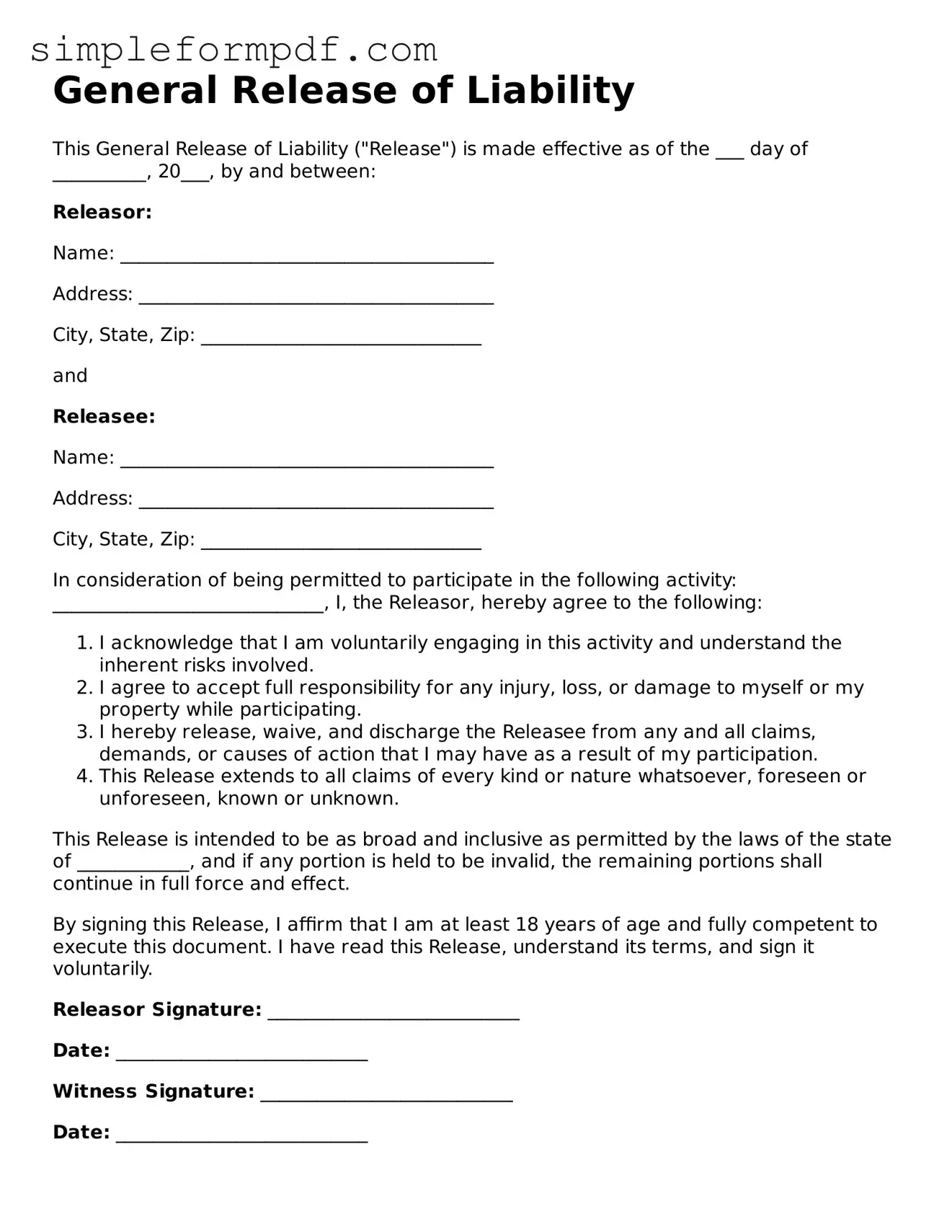General Release of Liability
This General Release of Liability ("Release") is made effective as of the ___ day of __________, 20___, by and between:
Releasor:
Name: ________________________________________
Address: ______________________________________
City, State, Zip: ______________________________
and
Releasee:
Name: ________________________________________
Address: ______________________________________
City, State, Zip: ______________________________
In consideration of being permitted to participate in the following activity: _____________________________, I, the Releasor, hereby agree to the following:
- I acknowledge that I am voluntarily engaging in this activity and understand the inherent risks involved.
- I agree to accept full responsibility for any injury, loss, or damage to myself or my property while participating.
- I hereby release, waive, and discharge the Releasee from any and all claims, demands, or causes of action that I may have as a result of my participation.
- This Release extends to all claims of every kind or nature whatsoever, foreseen or unforeseen, known or unknown.
This Release is intended to be as broad and inclusive as permitted by the laws of the state of ____________, and if any portion is held to be invalid, the remaining portions shall continue in full force and effect.
By signing this Release, I affirm that I am at least 18 years of age and fully competent to execute this document. I have read this Release, understand its terms, and sign it voluntarily.
Releasor Signature: ___________________________
Date: ___________________________
Witness Signature: ___________________________
Date: ___________________________
